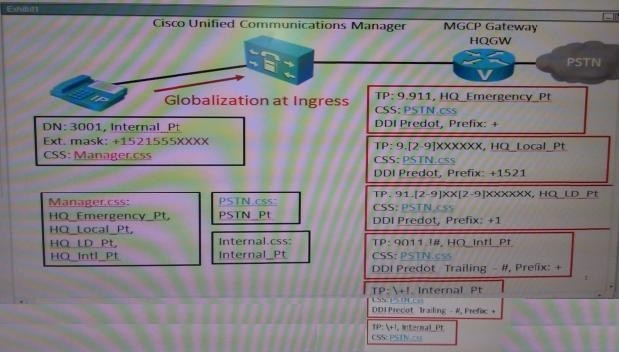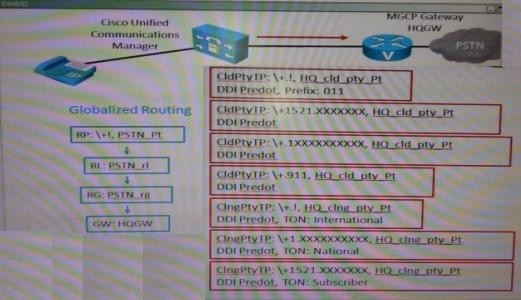which two types of Call Admission Control can be implemented?
If your IP telephony administrator asks you to configure a local zone for your dial plan to control the volume of calls between two end points in a centralized multisite environment, which two types of Call Admission Control can be implemented? (Choose two.)
What is the best way for bearer traffic to be handled?
A company is implementing a Cisco IP Videoconferencing solution that includes a Cisco CallManager and a Cisco IOS Gatekeeper. The company uses H.323 and H.320 devices exclusively. Video calls will use RTP streams for audio, video, and far-end camera control and a
sequence of call control signaling messages.What is the best way for bearer traffic to be handled?
which pattern would be advertised?
How should MCUs be configured to support this customer and minimize bandwidth consumption?
Exhibit:
A customer is interested in using videoconferencing to link offices for regional, district, and area sales meetings. The customer currently uses IP telephony and has an IP WAN linking all the remote offices. The customer is concerned that a large number of videoconferences may use too much bandwidth, impacting the ability of other users to accomplish work on the network. How should MCUs be configured to support this customer and minimize bandwidth consumption?
what is the resulting called and calling number that is sent to the PSTN?
Refer to the following exhibit.
The MGCP gateway has the following configurations:
called party transformation CSS HQ_cld_pty CSS (partition=HQ cld_pty.Pt) call.ng party transformation CSS HQ_clng_pty CSS (partition=HQ_clng_pty Pt)
All translation patterns have the check box “Use Calling Party’s External Phone Number Mask” enabled.
When the IP phone at extension 3001 places a call to 9011 49403021 56001# what is the resulting called and calling number that is sent to the PSTN?
Which call would most likely require an audio transcoder?
Which call would most likely require an audio transcoder?
Which Cisco IOS command is used for internal SAF Clients to check SAF learned routes?
Which Cisco IOS command is used for internal SAF Clients to check SAF learned routes?
What is the most cost-effective solution that will provide the resilience that the customer desires without up
Laurens and Tilghman GeneralCom is implementing a Cisco IP Videoconferencing solution that includes a Cisco CallManager and a Cisco IOS Gatekeeper. The customer uses H.323 and H.320 devices exclusively. Video calls will use RTP streams for audio, video, and far-end camera control and a sequence of call control signaling messages. The customer is using the Alt-GK feature to protect the video telephony service from component failures. The customer is concerned that some of the existing H.323 devices may not support Alt-GK. What is the most cost-effective solution that will provide the resilience that the customer desires without upgrading or replacing the existing H.323 devices?
Which configuration parameter needs to be changed to resolve this videoconference issue?
A compnay has deployed a combination of Cisco VT Advantage cameras and H.323 video room systems. The Cisco VT Advantage camera users are complaining that many conferences are setting up as audio only. Which configuration parameter needs to be changed to resolve this videoconference issue?


















